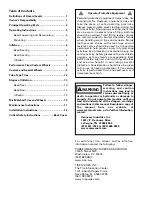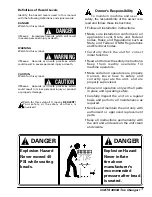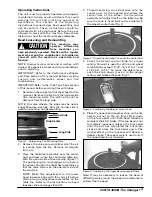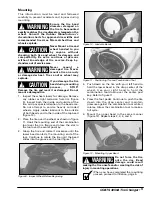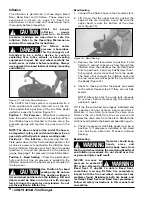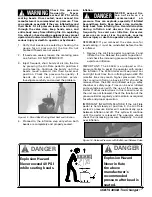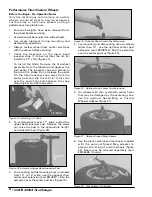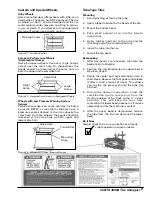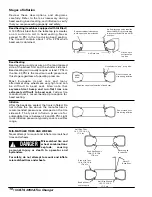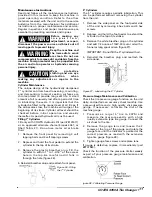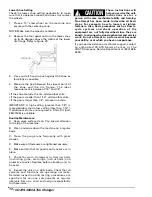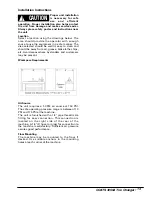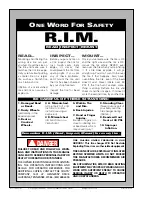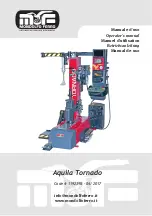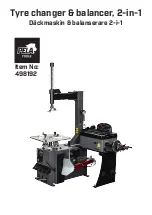
Stages of Inflation
Review these descriptions and diagrams
carefully. Refer to them as necessary during
bead sealing, bead seating, and inflation to verify
that you are proceeding properly and safely.
Bead Sealing (machines equipped with Air Blast)
A 140 PSI air blast from the table top jets creates
an air curtain to aid in bead sealing. Never
exceed 10 PSI in the tire during bead sealing.
The tire will contain about 1/2 to 2 PSI when
bead seal is obtained.
Bead Seating
Bead seating usually occurs on the long tapered
side of the wheel first and the shorter side last.
Bead seating will usually require at least 7 PSI in
the tire. 40 PSI is the maximum safe pressure at
this stage regardless of operating pressure.
Most European import cars and many
aftermarket alloy wheels are very tight and can
be difficult to bead seat. Also note that
asymmetrical hump and run-flat tires are
extremely difficult to bead seat
. Follow tire
manufacturer's recommended procedure for
bead seating.
Inflation
After the beads are seated, the tire is inflated. Do
not inflate the tire above the manufacturer's
recommended pressure as stamped on the tire
sidewall. The typical inflation pressure for
automobile tires is between 24 and 45 PSI. Light
truck inflation pressure typically covers a wider
range.
MIS-MATCHED TIRES AND WHEELS
Never attempt to mount and inflate mis-matched
tires and wheels.
Mis-matched tire and
wheel combinations
explode, causing
personal injury or death to operator and
bystanders.
For safety, do not attempt to mount and inflate
mis-matched tires and wheels.
Requires rubber lubricant on
both upper and lower beads
Air flow through valve requires
about 140 PSI air pressure drop
to insure sufficient flow on diffi-
cult tires.
Lift tire up to
assist seal on
top side
Air-Flate Jets
40 PSI
Max.
Usually last to "pop" is top side
Requires visual confirmation of bead seat
Do not stand over
tire during inflation.
Do not stand over
tire during inflation.
Note the gap
in this area
Note 15°
Bead Seat
Even SIze Wheels
14.0, 15.0, 16.0,
17.0, etc.
Even Size Tires
14.0, 15.0, 16.0,
17.0, etc.
Bead will not
seat properly
Half Size Tires
14.5, 15.5, 16.5,
17/5, etc.
10 • COATS 4050A Tire Changer
Half Size Wheels
14.5, 15.5, 16.5,
17/5, etc.
DANGER
!


